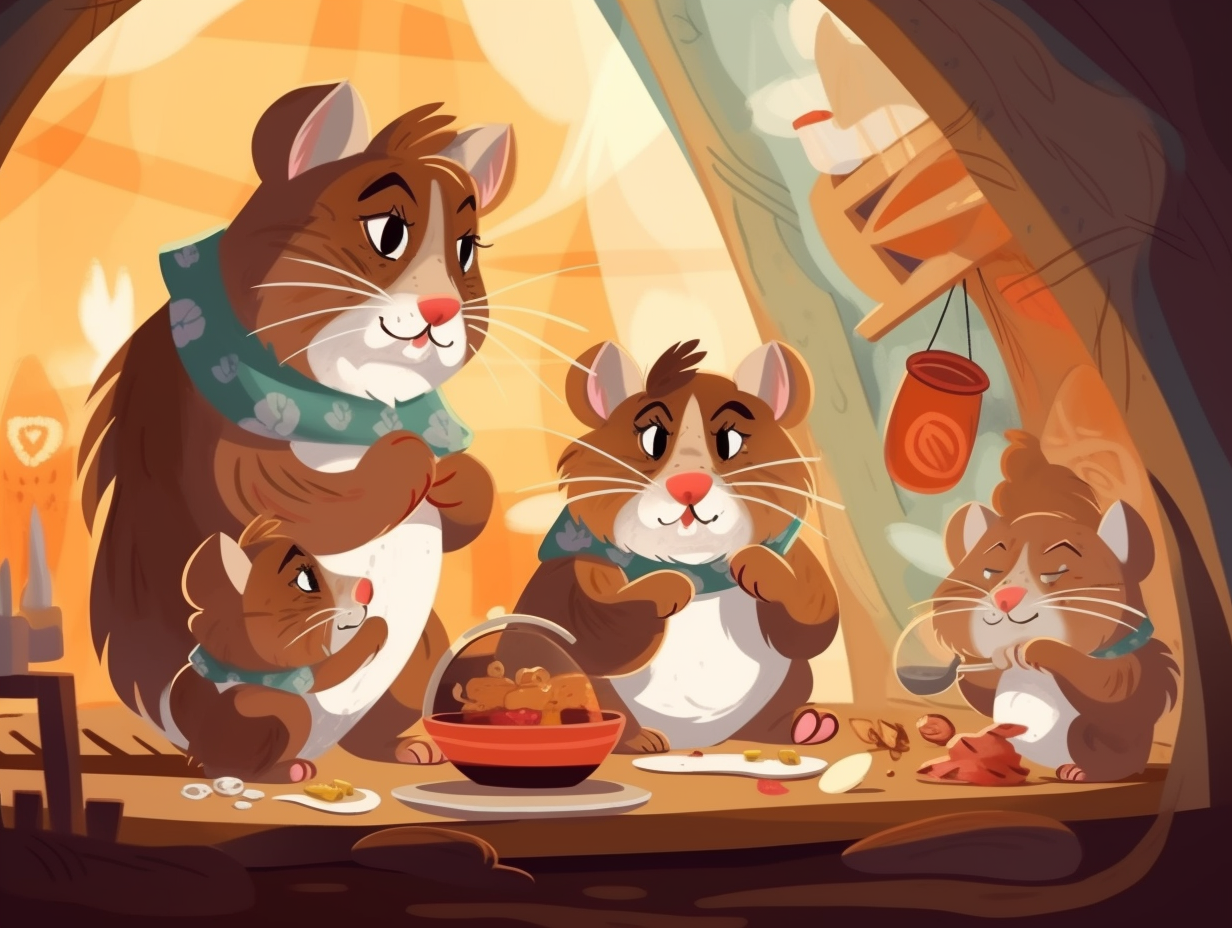Discover the Unbelievable: Top 25 Fun and Fascinating Facts About Sloths

1. Digestion Marathon
Feeling sluggish after a big meal? You've got nothing on this slothful slowpoke: three-toed sloths gorge themselves on leaves, fruit, and sprouting twigs, but their sloth-like metabolism takes up to an entire month to digest this delightful buffet fully.
Source => tenrandomfacts.com
2. Conservation-Fueled Laziness
Sloth speed dating: taking it slow to a whole new level to save the day (and their energy)! In a hilarious twist of fate, the sloths' reputation for laziness is a brilliant survival strategy, as their low metabolism and month-long digestion conserve vital energy for their leafy lifestyle.
Source => howlermag.com

Did you know pandas don't need a wardrobe change? Their iconic black and white fur serves as camouflage in both snowy and hot environments, and even muddy coats help them blend in! Discover more fascinating facts about these fashionable mammals.
=> Fun Facts about Pandas
3. Swimming Superpowers
Whoever labeled sloths "lazy" was clearly too slow to catch on to their aquatic prowess: Despite their leisurely pace on land, covering just 125 feet (38 meters) a day, these stealthy swimmers can speed up to three times their normal pace and hold their breath for an astonishing 40 minutes!
Source => worldanimalprotection.us
4. Diverse Sloth Diet
"Leaf" it to sloths to keep us guessing, even while lounging in treetops and perfecting their camouflage game: These slow-moving, upside-down chompers also enjoy snacking on fresh green shoots, fruits, and occasionally boost their protein intake with insects and bird eggs.
Source => nationalzoo.si.edu

5. Chill in Fur Coats
Who turned down the thermostat on these cuddly slowpokes? Sloths are rocking the naturally cool vibe, even more than you might think: Despite their fur coats, sloths have a lower-than-human body temperature, ranging from a chill 25-35°C (77-95°F) and dropping to 20°C (68°F) when they're in their lazy torpor state.
Source => britannica.com
6. Poop Odyssey & Moth Pals
Ladies and gentlemen, behold the great sloth poop odyssey: a daring, slow-motion quest for defecation and mutual benefit! In this daring journey, our hero, the three-toed sloth, valiantly descends from the safety of the canopy every eight days, braving the dangers of the forest floor to dig a hole with its tail, poop, and climb back up to safety. Their perilous pursuit rewards them not only with relief, but also nurtures a beautiful symbiotic relationship with the pyralid moths residing in its fur. These tiny passengers are provided the opportunity to lay their eggs in the dung, and in turn, they gift the sloth essential nutrients through the fur-embedded algae that our fluffy protagonist nibbles on.
Source => news.cals.wisc.edu
7. Stealthy Speedboat Sloths
Sloths: Nature's stealthy speedboat superheroes in the water, yet lovable tree-stuck snails on land. These groovy, fur-swathed cruisers can swim at triple the speed of their sluggish land-waddle, making them totally rad, submerged forest ninjas: Surprisingly swift swimmers for such famously slow land-dwellers, sloths employ their aquatic prowess to navigate between trees and avoid toothy and talony foes, while their shaggy coats serve as tiny ecosystems with symbiotic algae for sustenance and camouflage. But climate change and human interference threaten their tree-hopping, water-sprinting awesomeness, so let's not be slothful in helping preserve these gnarly Marvels of the Forest!
Source => en.wikipedia.org
8. Weekly Potty Party
Here's a potty (party) only sloths attend; they lay a desolate deuce just once a week, on the ground of course: Sloths defecate so infrequently to perhaps communicate with their fellow slowpokes through scent, and sloth moths crash their fecal soiree to lay larvae in the waste, benefiting the moths far more than the sloths.
Source => slothconservation.org
9. Underwater Snorkel Noses
While Michael Phelps and Ariel the Little Mermaid may have some fierce competition in the animal kingdom, one surprisingly swift swimmer is hanging around, quite literally: Sloths, nature's adorable slowpokes, have a highly specialized body and fur for navigating wet, tropical environments, and can hold their breath underwater for up to 40 minutes by using their noses as snorkels.
Source => zoonewengland.org

10. Tree Acrobatics
Who knew sloths possess a hidden superpower: nimble tree acrobatics! These seemingly sluggish creatures are masters at aerial maneuvers and land gymnastics: With legs that can rotate 90 degrees to firmly grasp branches and long arms that can reach up to two feet, sloths effortlessly navigate through trees like a pro tightrope walker in slow motion.
Source => travelandleisure.com
11. Masters of Slow Metabolism
Sloths, the unassuming kings and queens of the slow lane, know how to live life in the chill zone better than any road-tripping frat bro could ever dream of: these tree-dwelling, lovable lumps have a ridiculously low metabolic rate of just 40-74%, allowing them to thrive on extremely limited food intake while leisurely digesting in their four-chambered stomachs.
Source => beckycliffe.com
12. Green Fur Ecosystem
Sloths may not be climbing up to Hollywood's Walk of Fame any day soon, but they sure know how to rock a stylish fur coat with a green twist – literally: Sloths' fur is home to a unique ecosystem of algae, fungi, and other microorganisms, with one algae species, Trichophilus welckeri, being passed down from mother to baby sloths and maintaining a special co-evolutionary relationship.
Source => blogs.biomedcentral.com
13. Slowest Digestive Rate
Talk about a slow food movement: sloths have the slowest digestive rate of any mammal, taking up to 30 days for food to pass through their system, thanks to their low metabolic rate and low-energy diet, as discovered by the Sloth Sanctuary biologist Rebecca Cliffe using Carmine Red - a harmless faecal marker derived from the female Cochineal insect.
Source => slothsanctuary.com
14. Hidden Need for Speed
Say goodbye to sloths living life in the slow lane, because these seemingly lethargic tree-dwellers have a hidden need for speed: When under threat, sloths can amp up their velocity to 3 times their usual pace, and even transform into Michael Phelps impersonators, swimming at an impressive 3 meters per minute using their elongated arms as paddles.
Source => slothconservation.org

15. Camouflaged Motionlessness
Sloths may have missed the memo about the tortoise and the hare, but they sure know how to play a mean game of "statues in disguise": Though they move at a pace that would make a snail scoff, sloths fend off predators using their sloth-like speed and an uncanny ability to remain motionless, blending in with their surroundings, thanks to the fungi and algae that decorates their fur, and masking their scent to become nearly undetectable by hungry hunter-gatherers.
Source => slothconservation.org
16. Two-Toed Divas
While we often assume they're all sleepy smiles and cuddles, Hoffmann's two-toed sloths are secretly equipped with the wrath of the animal kingdom's most misunderstood divas: their fierceness befits a runway catfight rather than the tree-dwelling, slow-moving creatures we usually see. In the midst of adversity, these sloths transform from silent, smiling creatures of leisure into formidable forces of fury: unlike their seemingly sluggish demeanor, when threatened, they defensively wield their teeth and two large foreclaws with surprising determination.
Source => smithsonianmag.com
17. Exorcist-like Head Swivel
Who needs an exorcist when you're a sloth? These laid-back creatures can turn their heads just like Linda Blair in The Exorcist, minus the projectile vomiting, of course: With extra neck vertebrae that allow them to swivel their heads up to 270 degrees in either direction, sloths enjoy a wider range of motion than most mammals, helping them spot predators, mates, and pull off those classic upside-down tree poses.
Source => asknature.org
18. Split-Shift Sleeping Experts
Sloths: the original split-shift sleepers, mastering the art of catching Z's in the canopy before it was cool. By skillfully moonlighting as nocturnal critters and also casually being daytime dozers, they effectively avoid predators and keep the jungle guessing: these wonderfully sluggish creatures successfully adapt to their environment by sleeping both day and night, making them expert survivalists in their unique branch of slumber proficiency.
Source => animalhype.com
19. Ultimate Clingers
Feeling clingy? Sloths are the ultimate pros at hanging out: Their powerful grip enables them to easily support their entire body weight with just one arm, all while maneuvering through the rainforest canopy with aplomb, thanks to their long, curved claws designed for hooking onto branches securely.
Source => slothconservation.org
20. Energy-Preserving Dating
Sloth speed dating must really drag on, with all that conservation of energy they're best known for: These marvelous mammals hold the record for the lowest metabolic rate, allowing them to thrive on a minimal diet, even leading them to poop only once a week in a dedicated effort to preserve their resources!
Source => nationalzoo.si.edu
21. Mutualistic Trio
Who said three's a crowd? Especially when you've got a sloth, algae, and moths living in perfect harmony: This unlikely trio thrives through a mutualistic relationship, with algae on the sloths' fur providing essential nutrients, while moths lay their eggs in sloth dung, then fly back to their furry companion, acting as "portals" for nutrients to help nourish the algae – a true example of ecological teamwork!
Source => royalsociety.org
22. Tannin-Stained Teeth
Sloths may not have a winning smile for their Tinder profiles, but they're hopelessly devoted to chomping on leaves: Despite lacking incisors and canines like most mammals, sloths possess 18 high-crowned, continuously growing teeth—including razor-sharp pseudo-canines—for cutting and gnawing leafy delicacies straight from their tree-hanging habitats, though their teeth's lack of enamel and tannin-staining turn them an unappealing black hue.
Source => a-z-animals.com
23. Secret Water-Ballet Skills
When they're not mistakenly auditioning for an '80s hair metal drummer role with their unruly fur, sloths reveal their secret water-ballet skills: These seemingly leisurely creatures can actually swim three times faster than they move on land and can hold their breath for an impressive 40 minutes while gracefully gliding through water.
Source => allaboutsloths.com
24. 64-Million-Year Chill
With a metabolism slower than most snail-mail deliveries and a pension for mossy fashion statements, sloths sound like the epitome of the word "chill": These sluggish creatures have thrived for a staggering 64 million years, thanks to their energy-conserving metabolism and natural camouflage, allowing them to avoid both predators and resource competition with other animals.
Source => businessinsider.com
25. Mossy-Camo Tree-Huggers
Sloths, the ultimate tree-huggers, have unlocked the secret to hands-free comfort without needing that recliner from the furniture store: these languid creatures boast a special bone structure in their back, allowing them to hang effortlessly and conserve energy, surviving on their low-energy diet in the wild.
Source => wwf.org.uk
Related Fun Facts




















